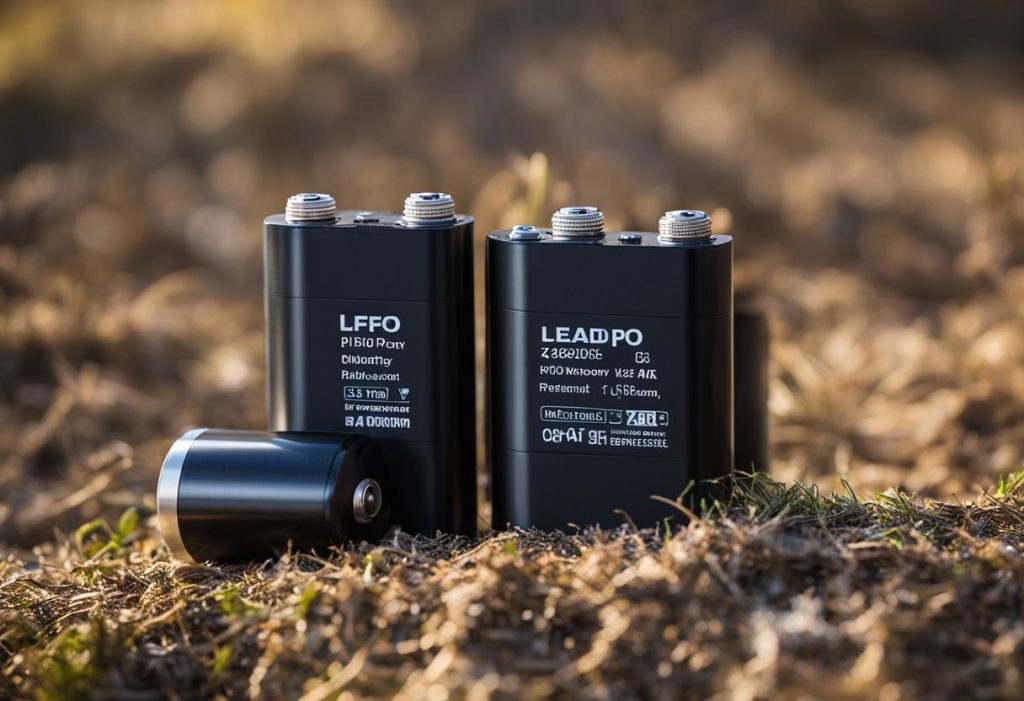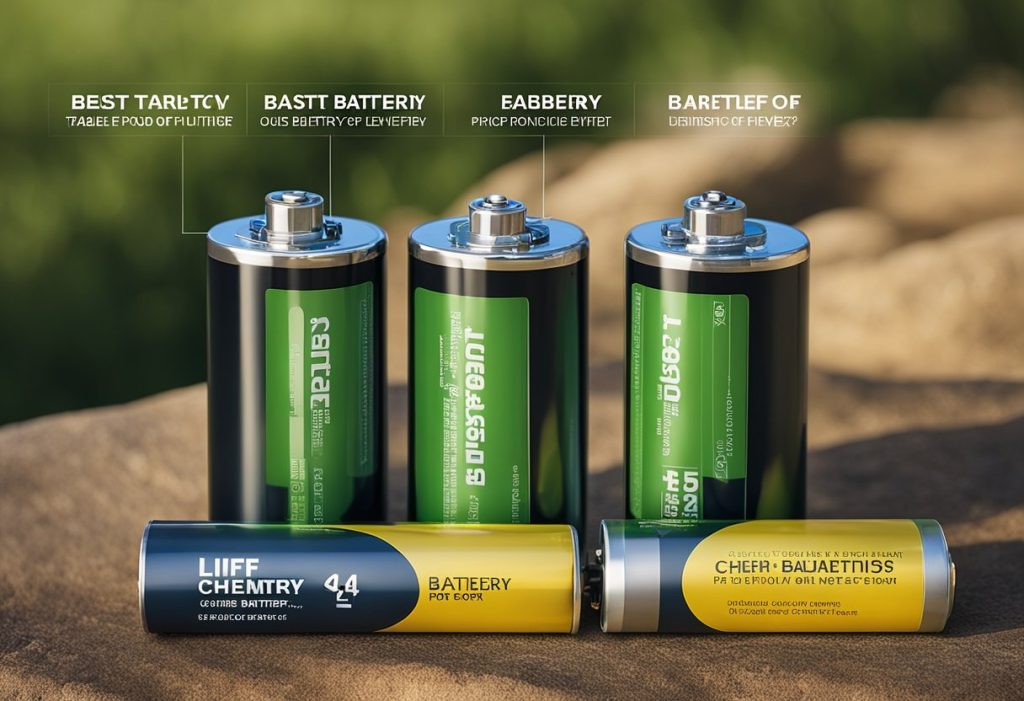Best Battery Chemistry for Outdoor Event Use: LiFePO4, Lithium Ion, or Lead-Acid?
As someone who has furnished generators for outdoor concerts, I know that power is essential for any outdoor event. With so many battery options available, it can be challenging to determine which is the best for your event. In this article, I will discuss the three most popular battery chemistries in portable power stations for outdoor events: LiFePO4, lithium-ion, and lead-acid. By the end of this article, you will have a better understanding of each battery chemistry and be able to make an informed decision for your next outdoor event.

Understanding battery chemistry is crucial when selecting the right battery for your outdoor event. Each battery chemistry has its own unique properties, which affect its performance, lifespan, and safety. LiFePO4 batteries are the latest lithium-ion battery chemistry and offer enhanced safety features compared to traditional lithium-ion batteries. Lithium-ion batteries are more energy-dense than LiFePO4 batteries, making them ideal for smaller battery needs. Lead-acid batteries are the most affordable option, but they are also the heaviest and require more maintenance.
Now that you have a basic understanding of each battery chemistry, let's dive deeper into a comparative analysis of each battery chemistry and practical considerations for outdoor events. By the end of this article, you will be able to make an informed decision on the best battery chemistry for your next outdoor event.
Key Takeaways
- LiFePO4 batteries offer enhanced safety features compared to traditional lithium-ion batteries.
- Lithium-ion batteries are more energy-dense than LiFePO4 batteries, making them ideal for smaller battery needs.
- Lead-acid batteries are the most affordable option, but they are also the heaviest and require more maintenance.
Understanding Battery Chemistry

When it comes to choosing the best battery chemistry for outdoor event use, it's important to understand the differences between the three main types: LiFePO4, lithium ion, and lead-acid. Here's what you need to know about each one:
LiFePO4
LiFePO4 (Lithium Iron Phosphate) batteries are known for their durability and long lifespan. They are also very safe, with a low risk of thermal runaway or explosion. LiFePO4 batteries are a popular choice for outdoor events because they can handle a wide range of temperatures and weather conditions. They are also lightweight and have a high energy density, meaning they can store a lot of energy in a small space.
Lithium Ion
Lithium ion batteries are the most common type of rechargeable battery used today. They are lightweight, have a high energy density, and can be recharged quickly. However, they are also more prone to thermal runaway and require more safety precautions than LiFePO4 batteries. Lithium ion batteries are a good choice for outdoor events where weight is a concern, but they may not be the best choice for extreme temperatures or harsh weather conditions.
Lead-Acid
Lead-acid batteries are the oldest type of rechargeable battery and are still commonly used today. They are heavy and have a low energy density, meaning they can't store as much energy as LiFePO4 or lithium ion batteries. However, they are also very affordable and can handle a wide range of temperatures. Lead-acid batteries are a good choice for outdoor events where cost is a concern and weight is not an issue.
Overall, the best battery chemistry for outdoor event use will depend on your specific needs and requirements. LiFePO4 batteries are a good choice for those who need a durable and long-lasting battery that can handle extreme temperatures and weather conditions. Lithium ion batteries are a good choice for those who need a lightweight battery that can be recharged quickly. Lead-acid batteries are a good choice for those who need an affordable battery that can handle a wide range of temperatures.
Comparative Analysis
When it comes to selecting the best battery chemistry for outdoor event use, there are several factors to consider. In this section, I will compare the three most common battery chemistries - LiFePO4, lithium-ion, and lead-acid - based on their energy density, safety, life cycle, and environmental impact.
Energy Density
Energy density is an important consideration for outdoor events because it determines how much energy can be stored in a given volume or weight of the battery. Lithium-ion batteries have the highest energy density of the three, followed by LiFePO4 and lead-acid batteries. This means that lithium-ion batteries can store more energy in a smaller and lighter package, making them a good choice for portable applications.
Safety
Safety is a critical factor when it comes to battery selection for outdoor events. LiFePO4 batteries are considered the safest of the three, as they are less prone to overheating and catching fire. Lithium-ion batteries are generally safe, but they can be more prone to thermal runaway if damaged or abused. Lead-acid batteries are the least safe of the three, as they contain corrosive and toxic materials that can be hazardous if handled improperly.
Life Cycle
The life cycle of a battery refers to the number of charge and discharge cycles it can undergo before it reaches the end of its useful life. LiFePO4 batteries have the longest life cycle of the three, with a typical lifespan of 2000 to 5000 cycles. Lithium-ion batteries have a slightly shorter lifespan, typically lasting 1000 to 3000 cycles. Lead-acid batteries have the shortest lifespan, lasting only 300 to 700 cycles.
Environmental Impact
The environmental impact of a battery is an important consideration, especially for outdoor events where sustainability is a key concern. LiFePO4 batteries are considered the most environmentally friendly of the three, as they do not contain toxic or hazardous materials and can be recycled easily. Lithium-ion batteries contain some toxic materials and can be more difficult to recycle. Lead-acid batteries are the least environmentally friendly of the three, as they contain lead and sulfuric acid, both of which can be hazardous if not disposed of properly.
In conclusion, when it comes to selecting the best battery chemistry for outdoor event use, there is no one-size-fits-all solution. Each battery chemistry has its own advantages and disadvantages, and the decision ultimately depends on the specific needs and requirements of the event.
Practical Considerations for Outdoor Events
When choosing the best battery chemistry for outdoor event use, there are several practical considerations to keep in mind. These include weather conditions, portability, and cost.
Weather Conditions
Outdoor events can be subject to a variety of weather conditions, from extreme heat to freezing temperatures. It is important to choose a battery chemistry that can withstand these conditions and continue to operate at peak performance.
Lead-acid batteries are known to have issues with extreme temperatures, and may not perform well in very hot or very cold conditions. Lithium-ion and LiFePO4 batteries, on the other hand, are more resilient and can operate at a wider range of temperatures.
Portability
Another important consideration for outdoor events is portability. Depending on the size and scope of the event, you may need to move your battery system from one location to another. In this case, a lightweight and portable battery chemistry may be preferable.
LiFePO4 batteries are known for their compact size and lightweight design, making them an ideal choice for portable power needs. Lithium-ion batteries are also relatively lightweight, but may not be as compact as LiFePO4 batteries. Lead-acid batteries, on the other hand, tend to be heavier and less portable.
Cost
Finally, cost is always a consideration when choosing a battery chemistry for outdoor event use. While lead-acid batteries tend to be the most affordable option, they may not offer the same performance and longevity as lithium-ion or LiFePO4 batteries.
Lithium-ion batteries are generally more expensive than lead-acid batteries, but may offer better performance and longer lifespan. LiFePO4 batteries are often the most expensive option, but may be worth the investment for their superior performance and durability.
Overall, when choosing the best battery chemistry for outdoor event use, it is important to consider a variety of factors, including weather conditions, portability, and cost. By weighing these factors carefully, you can select the battery chemistry that best meets your needs and ensures reliable power for your outdoor event.
Frequently Asked Questions
What are the advantages of using LiFePO4 batteries over lead-acid or lithium-ion batteries for outdoor events?
LiFePO4 batteries have several advantages over lead-acid or lithium-ion batteries when used for outdoor events. Firstly, they have a longer lifespan, which means they need to be replaced less frequently. Secondly, they are more efficient at charging and discharging, which means they can be used for longer periods of time. Finally, they are more environmentally friendly, as they contain fewer toxic materials.
What is the lifespan of LiFePO4 batteries compared to lead-acid or lithium-ion batteries when used for outdoor events?
LiFePO4 batteries have a longer lifespan compared to lead-acid or lithium-ion batteries when used for outdoor events. They can last up to 10 years or more, depending on usage and maintenance. In contrast, lead-acid batteries typically last between 3-5 years, while lithium-ion batteries last between 2-3 years.
Which type of battery chemistry is the most cost-effective for outdoor event use: LiFePO4, lithium-ion, or lead-acid?
The most cost-effective battery chemistry for outdoor event use depends on several factors, including the size of the event, the power requirements, and the budget. In general, LiFePO4 batteries are more expensive upfront but have a longer lifespan and require less maintenance, making them more cost-effective in the long run. However, if budget is a major concern, lead-acid batteries may be a more cost-effective option.
What are the safety considerations for using LiFePO4 batteries in outdoor event settings?
LiFePO4 batteries are generally considered safe for outdoor event use. They are less likely to overheat or catch fire compared to other battery chemistries. However, it is important to follow proper handling and storage procedures to minimize the risk of accidents. This includes keeping the batteries away from heat sources and ensuring proper ventilation.
What is the charging time for LiFePO4 batteries compared to lead-acid or lithium-ion batteries when used for outdoor events?
LiFePO4 batteries have a faster charging time compared to lead-acid or lithium-ion batteries when used for outdoor events. They can be fully charged in 2 hours or less, while lead-acid batteries can take up to 8 hours and lithium-ion batteries can take up to 4 hours.
What are the environmental impacts of using LiFePO4, lithium-ion, or lead-acid batteries for outdoor events?
All battery chemistries have some environmental impact when used for outdoor events. However, LiFePO4 batteries are generally considered the most environmentally friendly option, as they contain fewer toxic materials and have a longer lifespan, reducing the need for frequent replacements. Proper disposal and recycling of batteries is important to minimize environmental impact.
